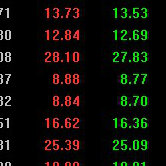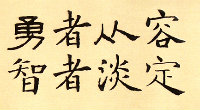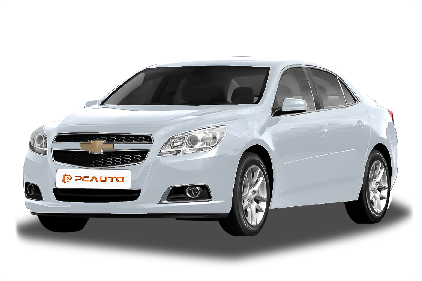Q
What type of transmission does the 2014 Malibu use?
The 2014 Chevrolet Malibu, when it hit Malaysian shores, primarily came with two transmission options: a 6-speed automatic (from the 6T40 family) and a 6-speed manual. The auto was the more common pick, and honestly, it made sense for most folks. This traditional torque converter 6AT shifted pretty smoothly—definitely a plus for Malaysia's stop-and-go city traffic and those longer highway cruises. What's neat is how well it paired with both the 2.5L Ecotec four-cylinder and the 2.0L turbo engines. Fuel economy? Nothing to write home about, but solid enough for the segment.
For Malaysian buyers, the auto was the practical choice, especially if you're navigating the chaos of KL traffic daily. The manual, though, was there for the driving enthusiasts—more engagement, and generally cheaper to keep running. If you're scouting a used Malibu now, do yourself a favor and check the transmission fluid service history. Regular maintenance *will* make that gearbox last longer. And good news: since this transmission shares tech with other GM models from the same era, like the Buick Regal, parts aren't too hard to come by in Malaysia.
Special Disclaimer: This content is published by users and does not represent the views or position of PCauto.
Related Q&A
Q
How much is a 2014 Chevy Malibu transmission?
The cost of a transmission for a 2014 Chevrolet Malibu can vary pretty widely depending on a few key factors: what type of transmission it is (like the 6-speed automatic), whether it's brand-new, remanufactured, or used, and where you end up buying it—think dealership, third-party supplier, or even a junkyard for a used unit. Here in Malaysia, if you're looking at a brand-new OEM transmission, you're probably looking at a price tag between RM8,000 and RM15,000. If you go the remanufactured or used route, you might be able to bring that down to around RM4,000 to RM8,000. But remember, that price usually doesn't include the labor cost for installation, which can add another RM1,000 to RM2,500, plus any extra parts that might be needed along the way.
My advice? Head to a Chevrolet authorized service center or a reputable transmission specialist shop to get a solid, accurate quote—they’ll know exactly what you need. And don’t sleep on regular maintenance! Changing your transmission fluid every 60,000 to 80,000 kilometers can really help extend its life. If you start feeling rough shifts or delays when changing gears, get it checked out ASAP. Small issues can turn into big, expensive problems fast if you ignore them. Also, with Malaysia’s hot and humid weather, keeping an eye on your cooling system is crucial—transmissions hate overheating, so make sure that system’s in good shape to keep things running smoothly.
Q
How much does a used Malibu cost?
In Malaysia, the price of a used Chevrolet Malibu can vary quite a bit depending on factors like the car's age, mileage, condition, and specs. Generally, you're looking at a range of around RM60,000 to RM120,000. For example, models from 2016 to 2018 with 50,000 to 80,000 kilometers on the clock tend to go for about RM70,000 to RM90,000. The newer ones, from 2019 to 2021, might set you back over RM100,000. When buying a used car, it's a good idea to check the service records and accident history. Sticking with reputable used car dealers or certified platforms can also help protect your interests.
The Chevrolet Malibu, as a midsize sedan, has its fans thanks to its comfort and space. But here's the thing to note: American used cars in Malaysia can come with higher maintenance costs and parts might be a bit harder to source. So, it's smart to scope out the service situation at nearby repair shops beforehand. Also, Malaysia's used car loan policies usually let you borrow 70% to 90% of the car's appraised value. The interest rate depends on the bank and your credit score, so shopping around before you buy could save you some cash.
Q
What engine does a 2014 Chevy Malibu have?
The 2014 Chevrolet Malibu hits the Malaysian market with two solid engine choices: a 2.5-liter naturally aspirated four-cylinder and a 2.0-liter turbocharged four-banger. The 2.5L puts out around 197 horsepower and 253 Nm of torque, which is perfect for your everyday commute and city driving needs. On the flip side, if you're craving more punch, the 2.0L turbo steps things up big time with a meaty 259 horsepower and a healthy 353 Nm of torque – that one's for the drivers who like a bit more fun behind the wheel. Both engines are mated to a 6-speed automatic transmission, delivering smooth shifts and decent fuel efficiency, which is always a plus. For Malaysian buyers, the 2.5L makes the most sense for daily city runs, while the 2.0L turbo is your go-to if you spend a lot of time on the highway or enjoy the occasional long road trip. It's worth noting that turbocharging tech is pretty much the norm these days in modern cars – it's a smart way to squeeze more power without bumping up engine size, all while keeping fuel consumption in check. No wonder so many automakers are jumping on that bandwagon.
Q
Do Malibus hold their value?
The Chevrolet Malibu holds its value moderately well in the Malaysian market, with used car prices varying significantly based on factors like model year, trim level, mileage, and service history. As an American midsize sedan, it doesn't quite match the local visibility of its Japanese or German rivals, but its solid chassis tuning and spacious interior still appeal to a specific group of buyers. When properly maintained and in good condition, a 3-5 year-old Malibu typically retains around 50-60% of its original value. It's worth noting that Malaysian consumers generally prefer fuel-efficient and reliable Japanese cars, which indirectly impacts the resale market for American models. We'd advise owners to keep complete service records and avoid extensive modifications—both go a long way in preserving residual value. Additionally, sticking with popular colors like white or silver can help when it comes time to sell. Overall, while the Malibu isn't a top performer in terms of depreciation, it remains a practical choice for buyers who prioritize comfort and value for money.
Q
How fast can a 2014 Chevy Malibu go?
The 2014 Chevrolet Malibu tops out at around 201 km/h (125 mph), though actual performance hinges on the engine under the hood. Over in Malaysia, you'll typically find it packing either a 2.5L four-cylinder or a punchier 2.0L turbo – that turbocharged mill definitely delivers the stronger kick. For Malaysian drivers, that kind of speed is more than enough for highway jaunts, but remember to keep an eye on local limits, which usually cap out at 110 km/h on the expressways.
Beyond straight-line speed, the 2014 Malibu earns props for its comfy suspension and roomy cabin, making it a solid pick for families. Fuel economy isn't too shabby either; the 2.5L version sips around 8.7 liters per 100 km in mixed driving. If you're scoping out a used one, do yourself a favor and check the engine service records and transmission condition. Running it hard at high revs over time can take a toll on the powertrain, and Malaysia's hot climate is tough on cooling systems too – so regular coolant changes are a must.
Q
How long can Malibu last?
The lifespan of a Chevrolet Malibu in Malaysia really boils down to how well you maintain it, your driving style, and the road conditions it's exposed to. Stick to the manufacturer's recommended service schedule—like getting the oil changed every 5,000 to 10,000 km and having key components inspected regularly—use genuine parts, and avoid aggressive driving, and you're looking at a solid 200,000 to 300,000 km or even 15+ years on the road. Malaysia's tropical heat can be tough on rubber parts like belts and bushings, as well as electrical components, so it's smart to shorten inspection intervals, pay extra attention to rust prevention, and try to park in covered spots to shield it from harsh sunlight and rain.
Under the hood, the Malibu's ECOTEC engine is pretty tried-and-true, and paired with either the 6-speed or 9-speed automatic transmission, it delivers a balanced level of reliability for a midsize sedan. That said, as it racks up the kilometers, keep a close eye on the cooling system and transmission fluid condition—those are key areas to watch. For Malaysian buyers, if you're scouring the used car market, post-2015 Malibus tend to hold up better over time thanks to more advanced direct-injection tech and improved anti-corrosion treatments. And making a habit of taking it to authorized service centers for computer diagnostics can help catch potential issues before they turn into big problems.
Bottom line? A car's longevity is *heavily* tied to its service history. Keeping complete maintenance records isn't just about extending its life—it'll also give your Malibu a much better resale value down the line.
Q
How long does a Malibu engine last?
The Chevrolet Malibu's engine typically lasts between 200,000 to 300,000 kilometers, depending on regular maintenance and driving habits. Malaysia's tropical climate can take a toll on the engine cooling system and rubber components, so it's advisable to replace coolant regularly and check hose sealing performance to extend engine life. Good maintenance practices like timely oil changes, using the right viscosity lubricants, and avoiding prolonged high-rev driving can significantly boost engine durability. Also, Malaysia's rainy and humid conditions tend to cause electrical and sensor issues, making regular checks of these parts important too. It's worth noting that turbocharged models require more frequent oil changes and cooling system maintenance to keep the turbo running properly. For Malaysian owners, choosing original or high-quality maintenance parts and following the manufacturer's recommended service intervals are key to keeping the engine running smoothly for the long haul.
Q
What's a 2014 Malibu worth?
If you're scouring the Malaysian used car market for a 2014 Chevrolet Malibu, you'll typically find prices hovering between RM40,000 to RM60,000. Of course, the exact figure hinges on factors like overall condition, mileage, trim level, and service history. Back in the day, this midsize sedan was all about comfort and practicality, packing either a 2.0L or 2.4L engine paired with a 6-speed automatic transmission. Fuel economy is pretty average, but that's par for the course—this one's a solid choice for family runabouts.
Step up to the LTZ trim, and you're looking at extra goodies like leather seats or a sunroof, which will naturally nudge the price north. Pro tip for buyers: Always get a PUSPAKOM inspection to check the engine and gearbox health, and don't skip a thorough accident history check. Malaysia's hot and humid weather can be tough on rubber components too, so pay extra attention to the condition of chassis bushings and the air conditioning system—you don't want to end up sweating it out later.
Sure, its Japanese rivals like the Honda Accord or Toyota Camry tend to hold their value better in the used market, but the Malibu's American-tuned chassis still has a trick up its sleeve: superior high-speed stability. If your budget is tight but you've got a soft spot for that American ride feel, this Chevy might just be worth adding to your shortlist.
Q
Are 2014 Malibu reliable?
The 2014 Chevrolet Malibu lands somewhere in the middle of the pack when it comes to reliability. From what owners and expert reviews tell us, the 2.5L four-cylinder and 2.0L turbocharged engines are pretty solid pieces of kit – they've been around the block, so failure rate is relatively low. However, some owners have mentioned experiencing occasional rough shifting or hesitation from the transmission, especially at lower speeds. If you're a Malaysian looking at a used Malibu, I'd strongly advise giving the transmission a thorough check and going through the service records with a fine-tooth comb. Also, the car's electronic systems, like the touchscreen, can sometimes feel a bit laggy. And given our tropical climate here, don't skimp on maintaining that air conditioning system – it's a must.
On the upside, the Malibu does have good body rigidity, and back in the day, its standard six airbags and stability control system were right up there with the safety standards. It makes for a decent family car. Now, for Malaysian buyers, Japanese alternatives from the same year, like the Camry or Accord, might have a slight edge when it comes to sheer long-term durability. But the Malibu often comes with a more attractive price tag on the used market. If your budget is tight and you're okay with potentially slightly higher maintenance costs, it's still a contender worth considering. Just make sure you prioritize examples with complete service histories, and keep up with regular transmission fluid changes – that'll help keep it running smoothly for longer.
Q
Why does a 2014 Malibu have two Batteries?
The 2014 Malibu's dual-battery setup is all about supporting its advanced Start-Stop System. Here's how it works: when you pull to a temporary stop, the engine shuts off automatically to save fuel, then fires right back up as soon as you lift off the brake. The main battery handles the regular electrical demands—think starter motor and lights—while the auxiliary battery is dedicated solely to the Start-Stop function. This separation ensures those frequent restarts don’t disrupt other electronics, which is a big deal in a hot climate like Malaysia. High temperatures really take a toll on batteries, so having two batteries helps extend the overall electrical system’s lifespan and keeps things more reliable.
You’ll see similar setups in other hybrid or fuel-efficient models too. Some European cars, for example, pair a lithium battery with a traditional lead-acid one to handle the higher charge-discharge cycles. If you’re a Malaysian Malibu owner thinking about battery upgrades, go for a tropical climate-rated model—AGM batteries with better heat resistance are a solid choice. And don’t skip regular battery health checks; the heat and humidity here can sneak up on you with unexpected failures if you’re not careful.
Latest Q&A
Q
What is the difference between the 2024 and 2025 BMW 5 Series?
There are some differences between the 2024 and 2025 BMW 5 Series models. In terms of pricing, the 2024 520i starts at RM 332,800, with the 520i M Sport variant coming in at RM 349,800. The 2025 530i M Sport, on the other hand, is priced at RM 399,800.
Under the hood, the 2024 520i engines deliver either 210PS or 208PS, while the 2025 530i M Sport ups the ante with a 258PS powerplant. Performance-wise, the 2024 models top out at 230km/h and sprint from 0-100km/h in 7.5 seconds. The 2025 model pushes that top speed to 250km/h and shaves the 0-100km/h time down to just 6.2 seconds.
Looking at the specs, some 2024 trims have rear seats with manual adjustments or fixed configurations, whereas the 2025 model gets a 40:20:40 split-folding rear seat setup. Audio systems also see an upgrade: most 2024 models feature Harman Kardon speakers, while the 2025 model steps up to a Bowers & Wilkins surround sound system.
Additionally, the 2025 5 Series hit dealerships on March 13, 2025, and comes with a 2-year unlimited mileage warranty. The 2024 models first arrived on September 2, 2024.
Q
How much is insurance for a 2024 BMW 5 Series?
The insurance cost for the 2024 BMW 5 Series in Malaysia varies based on several factors, typically ranging from RM5,000 to RM15,000 annually. The exact amount depends on the vehicle model (such as 520i, 530e, or M550i), engine displacement, the owner's age, driving record, type of policy (comprehensive or third-party), and the insurance company's discount policies. For instance, the high-performance M550i, with its higher repair costs, will have significantly higher premiums than the entry-level 520i, while the hybrid 530e may qualify for partial insurance discounts due to its eco-friendly features. Additionally, Malaysia's insurance market is influenced by the No Claim Discount (NCD), where drivers with consecutive claim-free years can enjoy a maximum 55% reduction in premiums. It's advisable to obtain accurate quotes through insurance company websites or comparison platforms before purchasing a car, and also to understand the additional services offered by Malaysian car insurance, such as roadside assistance or windscreen coverage, as these details can impact the final decision. Notably, luxury car insurance usually includes higher third-party liability coverage limits to comply with local regulatory requirements, and owners can also adjust the excess amount according to their needs to balance premium costs.
Q
What is the maintenance cost of a 2024 5 Series?
The maintenance costs for the 2024 BMW 5 Series in Malaysia can vary depending on the specific model and driving habits, but generally speaking, the regular servicing fees for the first 3 years of a new car are roughly between RM3,000 to RM5,000 per year. This depends on the chosen original maintenance package and the actual mileage driven. BMW offers various maintenance plan in Malaysia, allowing owners to opt for one-time payment or installment plans. These packages typically cover basic items like oil changes, filter replacements, and brake inspections. If the vehicle is equipped with more high-tech features, such as active suspension or a hybrid system, the long-term maintenance costs might be slightly higher. However, BMW's after-sales service network in Malaysia is quite comprehensive, with many authorized service centers capable of providing professional maintenance and repair services. To reduce long-term ownership costs, it's advisable for owners to follow the manufacturer's recommended regular maintenance schedule and use genuine parts. This not only extends the vehicle's lifespan but also helps maintain a good resale value. Additionally, given Malaysia's hot and humid climate, owners should pay extra attention to maintaining the air conditioning system and battery to ensure the vehicle always stays in optimal condition.
Q
How much is a used BMW 5 Series 2024?
In the current Malaysian market, used 2024 BMW 5 Series models aren't widely available yet due to the new car's relatively recent launch. However, based on the market trends for used BMW 5 Series of similar model years and conditions, prices typically range from RM250,000 to RM350,000. The exact price depends on factors like trim level, mileage, maintenance history, and whether the original factory warranty is still valid. For instance, higher-spec models like the 530i M Sport might be closer to the upper end of that range, while entry-level variants such as the 520i would be relatively lower. When buying a used car, it's advisable to go through officially certified pre-owned channels or reputable dealerships to ensure the vehicle has undergone rigorous inspection and comes with warranty coverage. Additionally, the BMW 5 Series is renowned for its luxurious interior, advanced technology, and driving dynamics – the 2024 model, in particular, likely features the updated iDrive system and mild-hybrid technology, which also influence used prices. In Malaysia, used car prices can also be affected by import duties, road tax, and insurance costs, so it's recommended to thoroughly assess the total cost of ownership and compare different car sources to get the best value for money before making a purchase.
Q
How many BMW 5 Series sold in 2024?
As of 2024, official sales figures for the BMW 5 Series in Malaysia haven't been formally released yet. But looking at BMW Malaysia's past market performance and industry trends, this luxury sedan has always maintained steady demand locally, especially thanks to its blend of sporty performance and business luxury that really resonates with local buyers. For 2024, the BMW 5 Series has rolled out more eco-friendly powertrain options, like plug-in hybrid models, which should further appeal to buyers who want both efficiency and high performance. In the Malaysian market, luxury car sales are usually influenced by the economic environment, consumption tax policies, and brand promotional activities. Interested consumers are advised to follow BMW Malaysia's official website or authorized dealers for the latest and most accurate information. Additionally, as a representative of mid-size luxury sedans, the BMW 5 Series competes with models like the Mercedes-Benz E-Class and Audi A6, which also have a strong presence in the Malaysian market. Consumers can make a comprehensive comparison based on personal preferences and budget.
View More


















Pros
Cons